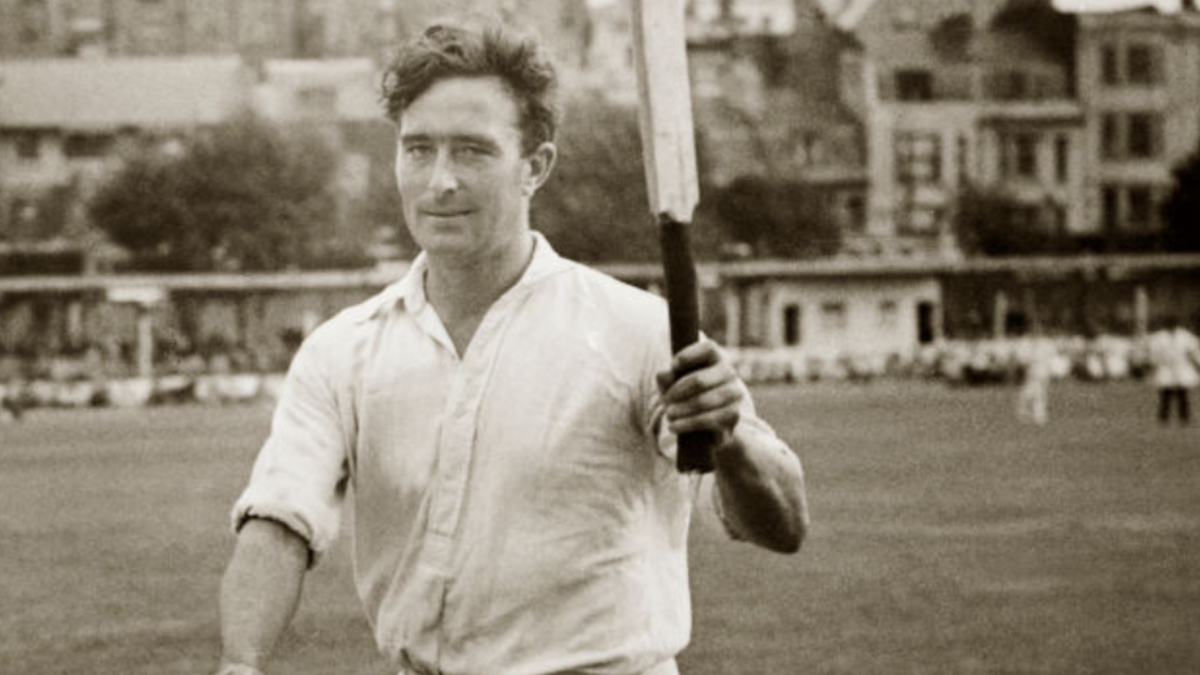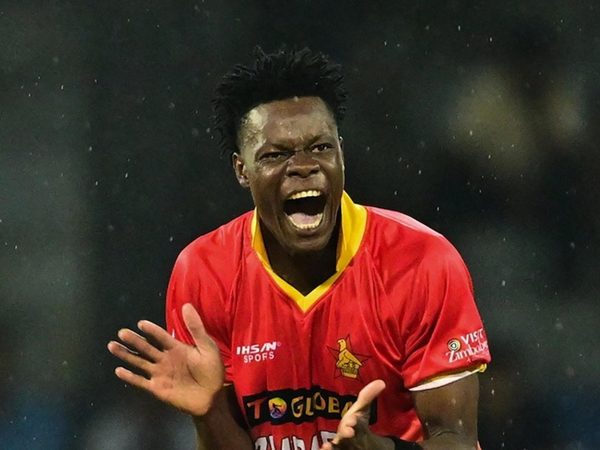
The Wisden Almanack report on the 1947 Adelaide Test between England and Australia that ended in a famous draw, with both Denis Compton and Arthur Morris hitting two centuries in the match.
There were four extraordinary features about this Test. It was played in perpetual heat and dense humidity, with the temperature sometimes 105; Lindwall finished the England first innings by taking three wickets, all bowled, in four balls; and both Compton and Morris achieved the rare feat of hitting two separate hundreds. This was the first time for an Australian to accomplish this in his own country. The South Australian Cricket Association marked these performances by presenting a watch to each of the three players.
England put up another brave struggle, but once again Hammond accomplished little with the bat and the bowling was not good enough. England introduced Hardstaff instead of Voce, and, with Barnes unfit, Australia played M Harvey of Victoria. In both innings, Hutton and Washbrook gave England a splendid send-off with a three-figure stand, but after tea on the opening day Edrich, Hutton and Hammond were dismissed in a disastrous thirty-five minutes before Compton and Hardstaff played out the final three-quarters of an hour. Again England were upset by the slower bowlers, and it was not surprising that Bradman did not take the new ball at 200. Third out, Hutton batted without mistake for four hours.
The second day provided plenty of thrills. Hardstaff remained with Compton until after lunch and then, trying to hook a bouncing delivery from Miller, he played on, the stand having put on 118 in two hours thirty-five minutes. Ikin stayed while 61 were added, and, with Compton in complete control, Yardley saw 74 runs put on for the seventh wicket before the Middlesex player’s great innings ended. Lindwall, after a rest and still using the old ball, held a sharp return catch from his first delivery. This was Compton’s finest display so far during the tour; at the wicket four and three-quarter hours, he did not offer any kind of chance. His main scoring strokes were fifteen fours and the feature of his play was powerful driving. Lindwall then took the new ball, the next over bowled both Bedser and Evans off-stump with successive deliveries; the next just missed the wicket and the fourth bowled Wright. So Lindwall captured the last four wickets in two overs while conceding only two runs. Twenty-five minutes remained, and Bedser served England splendidly by causing Harvey to play-on and then producing an almost unplayable ball that bowled Bradman for nought. Consequently, Australia finished the day 24 for two wickets.
During the third day, Australia made a complete recovery by adding 269 while losing only Morris – who hit his second Test century – and Hassett, who helped to put on 189 for the third partnership in nearly four hours. Bedser alone bowled well this day, as Wright, uncertain in his run, delivered many no-balls. Showing more freedom than in previous Tests, Morris drove delightfully and hit two sixes and twelve fours. Altogether his innings lasted four and a half hours. Miller and Johnson carried the score to 293 for four wickets before the close.
The heat was again almost overwhelming on the fourth day when Miller and Johnson carried their fifth-wicket stand to 150 before Johnson was leg-before. The high temperature was too much for Bedser, who had to rest for a period in the pavilion. Again Yardley bowled his leg theory splendidly and quietened the batsmen, but Miller became the seventh Australian to hit a century in this series. When Lindwall left, Australia, with two wickets remaining, were 37 behind, and at this point, Bedser returned; but without further loss, Australia went ahead. The innings closed when Edrich brilliantly ran out Toshack. Miller, who offered three chances after passing three figures, remained unbeaten, having batted attractively for four and a half hours. He hit one six and nine fours. No sooner had Hutton and Washbrook opened England’s second innings than a sharp thunderstorm accompanied by vivid flashes of lightning held up the game for twenty-three minutes. Lindwall and Miller each bounced the ball freely, but Hutton and Washbrook seldom missed a scoring opportunity. Their praiseworthy stand reached 96 at the close.
On the fifth day, off the first three deliveries by Lindwall, Hutton and Washbrook for four runs needed to complete their second three-figure opening stand of the match, having batted eighty-seven minutes; then disaster occurred. Tallon, standing well back, held a snick from Washbrook. Some people thought the ball was scooped off the ground. For a time Edrich shaped well, but Johnson bowled Hutton, and Toshack caused such a collapse that by 5.15pm, eight England wickets were down for 255. Compton alone of the recognised batsmen remained, and shielding Evans from the bowling, he defied all Bradman’s devices to remove him. At the close, England were 274-8; Evans had not scored.
Evans again produced a splendid defence on the rare occasions Compton could not face the bowling, but within a quarter of an hour of the resumption, when Compton was 60 and the total 282, Tallon failed to stump Evans off Dooland. Had this chance been accepted, Australia must have won, but, instead, England made such an excellent recovery that Hammond was able to declare. Evans was at the wicket ninety-five minutes before he got his first runs by placing Lindwall to leg for two at 309. With the last scoring stroke before lunch, Compton hit Dooland through the covers for four, so completing his second hundred. He batted four hours forty minutes, hitting ten fours, and his gallant stand with Evans realised 85 in two and a quarter hours. Of 98 balls received, Evans scored off only seven.
When one ball had been sent down after lunch Hammond applied the closure, setting Australia to make 314 in three and a quarter hours. Considering England’s poor bowling resources and the experienced hitters at Australia’s command, this was not an impossible task, but from the outset, Bradman declined to accept the challenge. Up to a point Morris was enterprising, but Harvey, in his first Test, naturally declined to take risks. He stayed one hundred minutes while helping Morris to make Australia’s first three-figure opening stand of the series. Then Morris and Bradman calmly played out time, and Morris became the second Australian to hit two centuries in a Test against England, the first being W Bardsley, another left-hander, at Kennington Oval in 1909.
Never before had two players each hit two separate hundreds in a Test; Compton earned the distinction of completing four hundreds in consecutive innings in first-class cricket. This drawn game gave Australia the rubber. The full attendance was 135,980 and the receipts £18,117.








